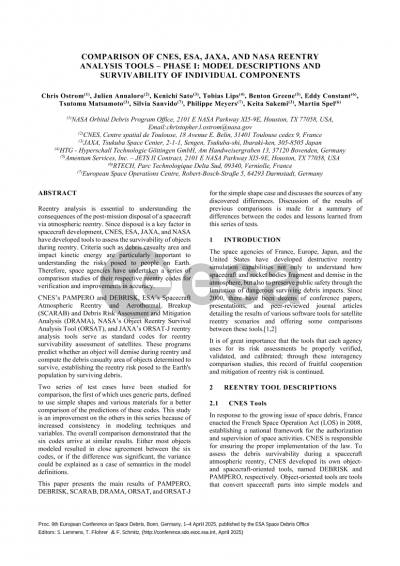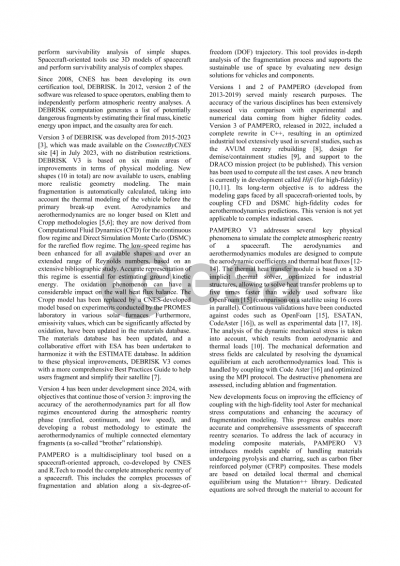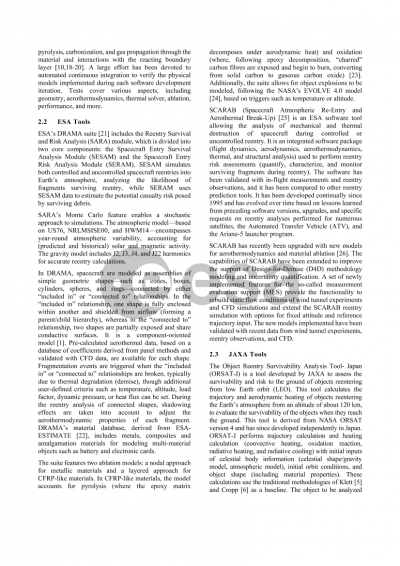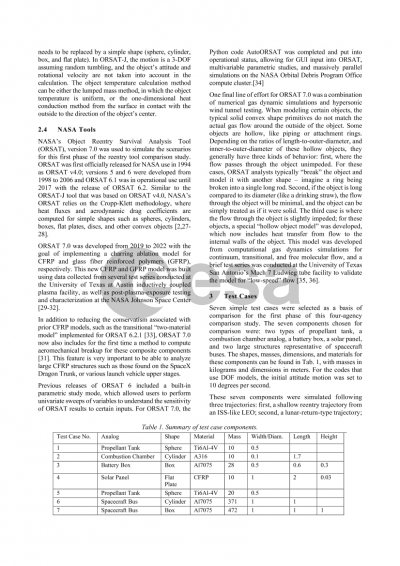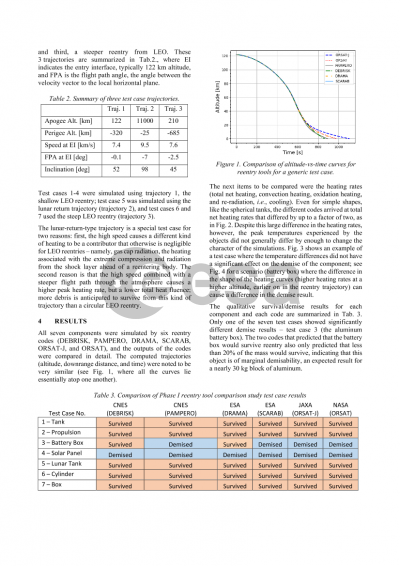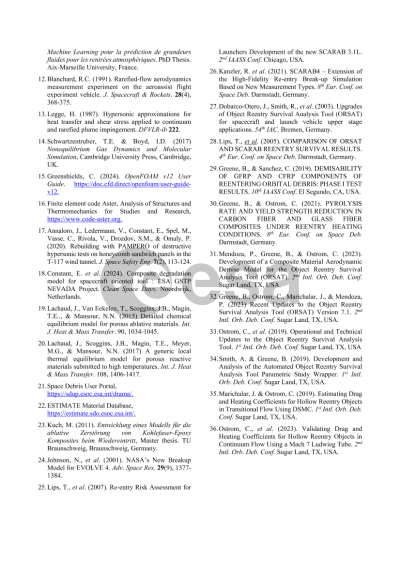Document details

Abstract
Reentry analysis is essential to understanding the consequences of the postmission disposal of a spacecraft via atmospheric reentry. Since disposal is a key factor in spacecraft development, the Centre National d’Etudes Spatiales (CNES), the European Space Agency (ESA), the Japan Aerospace Exploration Agency (JAXA), and NASA have developed tools to assess the survivability of objects during reentry. Criteria such as debris casualty area and impact kinetic energy are particularly important to understanding the risks posed to people on Earth. Therefore, space agencies have undertaken a series of comparison studies of their respective reentry codes for verification and improvements in accuracy.
CNES’ PAMPERO and DEBRISK, ESA’s Spacecraft Atmospheric Reentry and Aerothermal Breakup (SCARAB) and Debris Risk Assessment and Mitigation Analysis (DRAMA), NASA’s Object Reentry Survival Analysis Tool (ORSAT), and JAXA’s ORSAT-J serve as standard codes for reentry survivability assessment of satellites. These programs predict whether an object will demise during reentry and compute the debris casualty area of objects determined to survive, establishing the reentry risk posed to the Earth's population by surviving debris.
Two series of test cases have been studied for comparison, the first of which uses generic parts, defined to use simple shapes and various materials to compare the predictions of these codes. This study is an improvement on the others in this series because of increased consistency in modeling techniques and variables. The overall comparison demonstrated that the six codes arrive at similar results. Either most objects modeled resulted in close agreement between the six codes, or if the difference was significant, the variance could be explained as a case of semantics in the model definitions.
This paper presents the main results of PAMPERO, DEBRISK, SCARAB, DRAMA, ORSAT, and ORSAT-J for the simple shape case and addresses the sources of discovered differences. Discussion of the results of previous comparisons is made for a summary of differences between the codes and lessons learned from this series of tests.
Preview
